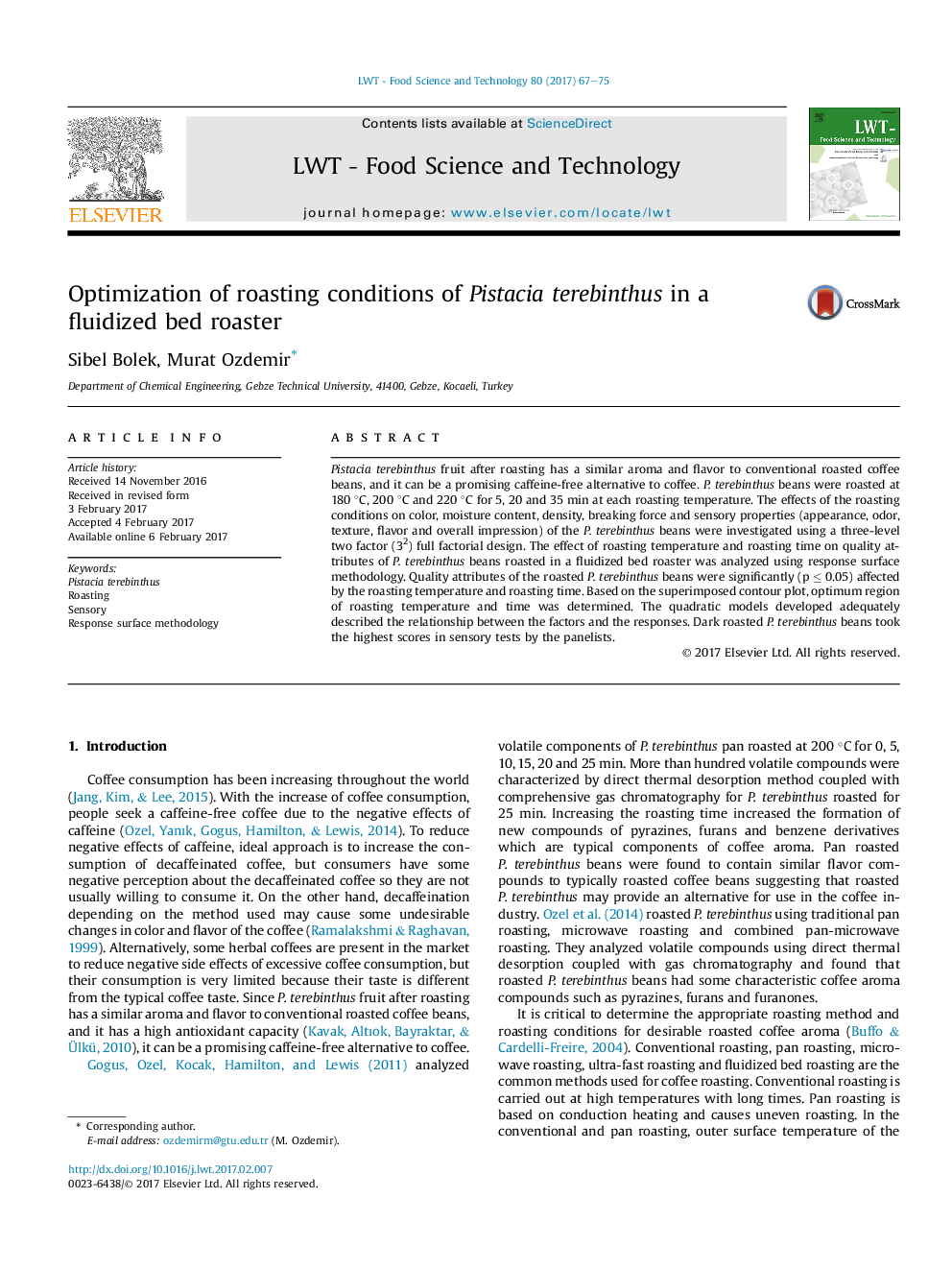| Article ID | Journal | Published Year | Pages | File Type |
|---|---|---|---|---|
| 5768521 | LWT - Food Science and Technology | 2017 | 9 Pages |
â¢Temperature and time are the important factors in roasting of P. terebinthus beans.â¢Roasting temperature and time affected acceptability of P. terebinthus beans.â¢Dark roasted P. terebinthus beans took the highest scores in acceptability tests.â¢Quadratic models adequately described the relationship between factors and responses.
Pistacia terebinthus fruit after roasting has a similar aroma and flavor to conventional roasted coffee beans, and it can be a promising caffeine-free alternative to coffee. P. terebinthus beans were roasted at 180 °C, 200 °C and 220 °C for 5, 20 and 35 min at each roasting temperature. The effects of the roasting conditions on color, moisture content, density, breaking force and sensory properties (appearance, odor, texture, flavor and overall impression) of the P. terebinthus beans were investigated using a three-level two factor (32) full factorial design. The effect of roasting temperature and roasting time on quality attributes of P. terebinthus beans roasted in a fluidized bed roaster was analyzed using response surface methodology. Quality attributes of the roasted P. terebinthus beans were significantly (p â¤Â 0.05) affected by the roasting temperature and roasting time. Based on the superimposed contour plot, optimum region of roasting temperature and time was determined. The quadratic models developed adequately described the relationship between the factors and the responses. Dark roasted P. terebinthus beans took the highest scores in sensory tests by the panelists.
